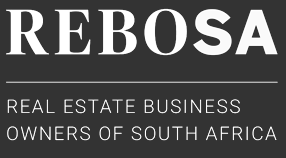Home Upgrading and Maintenance Take a Back Seat
Category Property market overview
Financial strain experienced by home owners is resulting in less housing maintenance and upgrading.
The latest Absa housing review for the fourth quarter released yesterday also revealed that only the luxury housing segment, which is defined as houses priced between R4.4 million and R16.3m, experienced price growth after taking the impact of inflation into account.
The review said building activity on alterations and additions to existing houses was much subdued in the first eight months of the year.
It said building plans for alterations and additions contracted by 5.7 percent year-on-year in terms of the building area for which plans were approved and grew by 1.3 percent year-on-year for the building area reported as completed.
Jacques du Toit, a property analyst at Absa Home Loans, said this was a reflection of the extent of housing maintenance and upgrading against the background of financial strain experienced by homeowners.
The review said the average price of a luxury home, after adjustment to take into account the effects of inflation, increased by 2.8 percent yearon-year in the third quarter of this year.
By contrast, real house prices in the affordable housing market dropped by 2.9 percent year-on-year and middle segment homes by 2.3 percent year-on-year, it said.
The affordable housing segment includes homes between 40m² and 79m² that are priced at up to R600 000 this year. Average middle segment houses include homes between 80m² and 400m² and priced at R4.4m or less.
Du Toit said real price deflation in the housing middle segment accelerated to 2.3 percent year-on-year in the third quarter from a drop of 0.8 percent in the previous quarter.
He said inflation adjusted price growth in housing middle segment had been on a downward trend since the first quarter of last year. Du Toit said price growth in the affordable housing market had been on a downward trend since the fourth quarter of last year.
The review revealed that the average nominal price of a new house increased sharply by 16.1 percent year-on-year to R2 020 200 in the third quarter after increasing by 9 percent year-on-year in the second quarter.
Du Toit said accelerating building cost inflation and rising vacant land values in the second and third quarters of this year might have contributed the significantly higher price growth in new housing in these two quarters.
He said the cost of having a new house built increased by 10.3 percent year-on-year in the third quarter after rising by 8.3 percent year-on-year in the previous quarter.
Factors impacting building costs include building material costs, equipment costs, transport costs, labour costs, developer and contractor profit margins and the cost of developing land for residential purposes.
The average price of an existing house increased by a nominal 3.5 percent year-onyear to about R1 390 700 in the third quarter.
This meant it was about 31.2 percent or R629 500 cheaper in the third quarter of this year to have bought an existing house than to have had a new home built.
Article courtesy of Business Report
Author: Business Report




